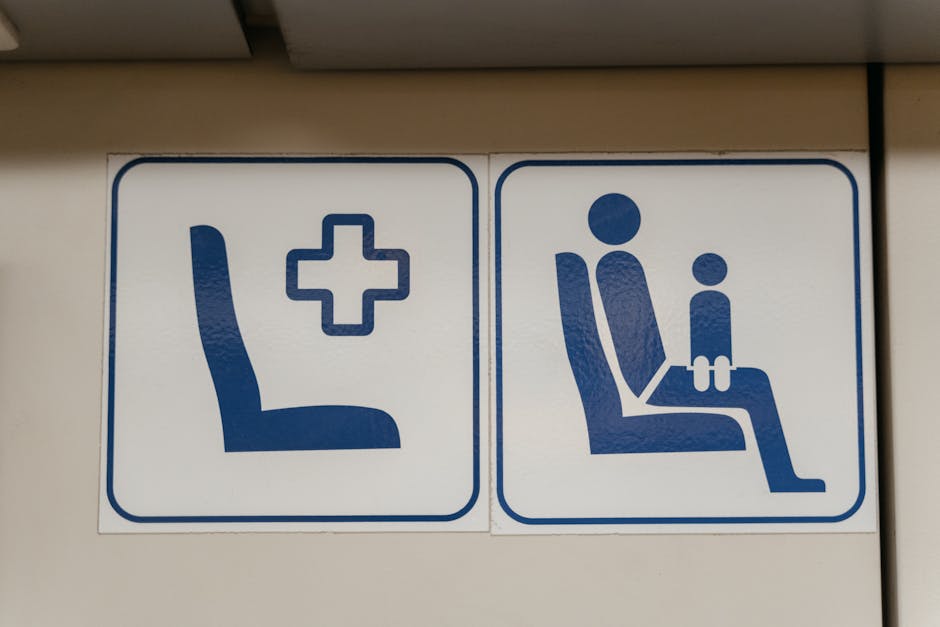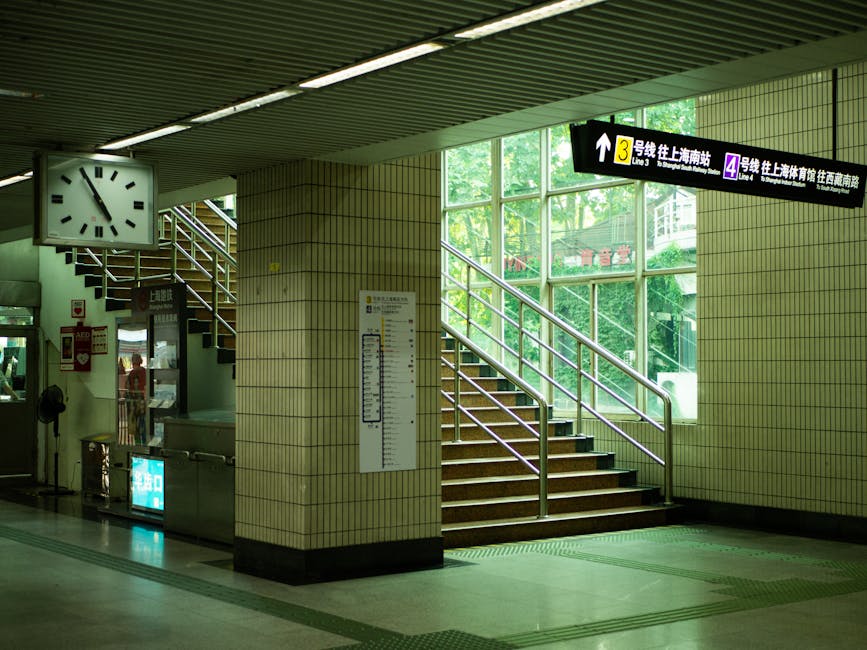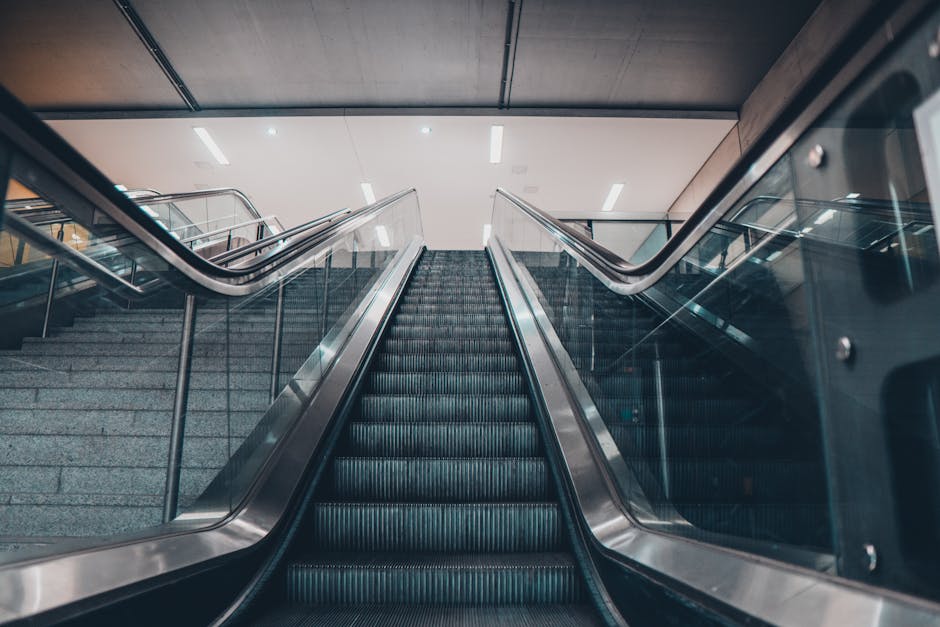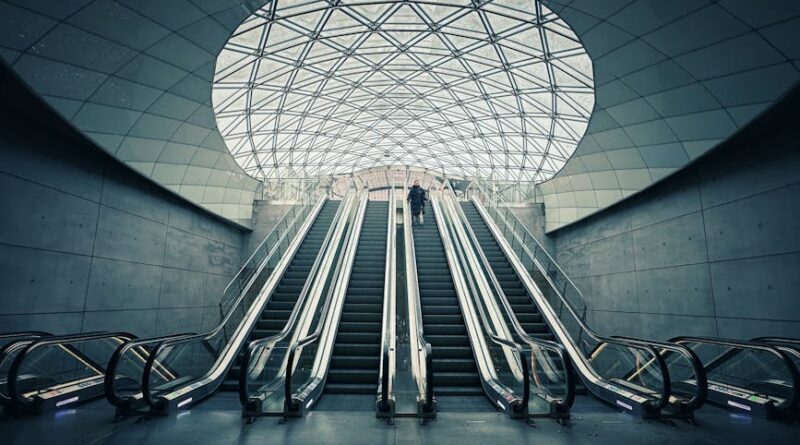Exploring Accessibility in Public Transit: A Comprehensive Guide
In our fast-paced world, public transportation plays a vital role in connecting people to work, school, healthcare, and leisure activities. However, for individuals with disabilities, navigating public transit can be challenging and sometimes inaccessible. ‘Accessibility in public transit’ is not just about ramps and elevators; it encompasses a wide range of features and services designed to make transportation more inclusive for all. In this article, we will delve into the various aspects of accessibility in public transit, from historical perspectives to current innovations and future possibilities.
The Evolution of Accessibility in Public Transit

By MART PRODUCTION via Pexels
Accessibility in public transit has come a long way since the days of segregated seating and limited accommodations for individuals with disabilities. The passage of the Americans with Disabilities Act (ADA) in 1990 was a landmark moment that mandated equal access to public transportation for people with disabilities. This legislation laid the foundation for accessible design standards and services that continue to shape public transit systems today.
One of the key principles of ADA is the concept of ‘universal design,’ which aims to create environments and products that are usable by all people, regardless of their abilities. In the context of public transit, this means incorporating features such as low-floor buses, audio announcements, tactile paving, and priority seating to accommodate passengers with various disabilities.
Despite these advancements, there are still challenges and barriers that prevent full accessibility in public transit. Infrastructure limitations, budget constraints, and lack of awareness can hinder the implementation of inclusive features. It is essential for transit agencies and policymakers to prioritize accessibility and create a more welcoming environment for all passengers.
Key Features of Accessible Public Transit

By hippowoo via Pexels
Accessible public transit goes beyond just physical accommodations; it encompasses a wide range of features and services that cater to the diverse needs of passengers. Some key features of accessible public transit include:
1. Wheelchair Accessible Vehicles
Wheelchair accessible vehicles, such as low-floor buses and trains, are essential for passengers with mobility impairments. These vehicles have ramps or lifts that allow wheelchair users to board and alight safely. In addition to physical accessibility, it is crucial for transit operators to provide securement devices and designated spaces for wheelchair users to ensure a comfortable and safe journey.
2. Audio and Visual Announcements
Audio and visual announcements are essential for passengers with visual or hearing impairments. These announcements provide real-time information about stops, transfers, and service disruptions, allowing passengers to navigate the transit system independently. Transit agencies should ensure that announcements are clear, accurate, and timely to meet the needs of all passengers.
3. Tactile Paving and Signage
Tactile paving and signage are important features for passengers with visual impairments. Tactile paving, such as detectable warning surfaces and directional indicators, help passengers navigate stations and platforms safely. Clear and consistent signage with high color contrast and large fonts also enhance wayfinding for passengers with low vision.
4. Priority Seating and Accommodations
Priority seating and accommodations are designed to meet the needs of passengers with disabilities, seniors, and pregnant women. These designated spaces provide additional legroom, grab bars, and other amenities to ensure a comfortable and accessible journey. It is essential for transit operators to enforce priority seating policies and educate passengers about the importance of these accommodations.
5. Passenger Assistance Programs
Passenger assistance programs, such as Travel Training and Travel Aids, offer personalized support to passengers with disabilities. These programs provide training, information, and assistance to help passengers navigate the transit system independently. Transit agencies should invest in staff training and resources to ensure that all passengers receive the assistance they need.
Challenges and Opportunities in Accessibility

By Masood Aslami via Pexels
While progress has been made in enhancing accessibility in public transit, there are still challenges and opportunities to consider. Some of the key challenges include:
1. Funding and Budget Constraints
One of the main barriers to improving accessibility in public transit is funding and budget constraints. Many transit agencies struggle to allocate sufficient resources for accessible design features and services due to competing priorities and limited funding. It is essential for policymakers to prioritize accessibility and invest in long-term solutions that benefit all passengers.
2. Infrastructure Limitations
Infrastructure limitations, such as narrow platforms, steep staircases, and inaccessible stations, pose challenges for passengers with disabilities. Retrofitting existing infrastructure to meet accessibility standards can be costly and complex, requiring careful planning and coordination. Transit agencies should conduct thorough assessments of their facilities and prioritize upgrades that enhance accessibility for all passengers.
3. Awareness and Education
Many passengers and transit staff lack awareness and understanding of accessibility issues, leading to misunderstandings and conflicts. It is crucial for transit agencies to raise awareness about accessibility through training programs, outreach initiatives, and public education campaigns. By promoting a culture of inclusion and respect, transit agencies can create a more welcoming environment for all passengers.
Despite these challenges, there are also opportunities to enhance accessibility in public transit. Technological advancements, such as smartphone apps, real-time tracking systems, and digital displays, offer new possibilities for improving communication and wayfinding for passengers with disabilities. By leveraging these technologies and integrating them into transit systems, agencies can enhance the overall passenger experience and foster greater inclusivity.
Future Trends and Innovations in Accessibility
The future of accessibility in public transit is bright, with ongoing innovations and advancements that promise to make transportation more inclusive and seamless for all passengers. Some of the key trends and innovations to watch for include:
1. Autonomous Vehicles
Autonomous vehicles, or self-driving cars, have the potential to revolutionize public transit by offering on-demand, personalized transportation services. These vehicles can be equipped with accessible features, such as ramps, lifts, and automated announcements, to cater to passengers with disabilities. By integrating autonomous vehicles into transit systems, agencies can enhance accessibility and mobility for all passengers.
2. Smart Infrastructure
Smart infrastructure, such as sensor-based systems, connected devices, and artificial intelligence, can improve accessibility in public transit by providing real-time information and personalized services. For example, smart sensors can detect the presence of passengers with disabilities and adjust lighting, signage, and seating arrangements accordingly. By deploying smart infrastructure solutions, transit agencies can create a more responsive and inclusive environment for all passengers.
3. Inclusive Design Principles
Inclusive design principles, such as human-centered design, participatory design, and co-creation, are essential for creating accessible and user-friendly transit systems. By involving passengers with disabilities in the design process, agencies can gain valuable insights and feedback that inform the development of inclusive features and services. By embracing inclusive design principles, transit agencies can create a more welcoming and accessible environment for all passengers.
Expert Opinions
We reached out to experts in the field of accessibility and public transit to gather their insights on the current state of accessibility and the future of inclusive transportation. Here are some key takeaways from our conversations:
1. Dr. Sarah Johnson, Accessibility Advocate
“Accessibility is not just a legal requirement; it is a moral imperative. We must strive to create transportation systems that are inclusive, welcoming, and respectful of all passengers, regardless of their abilities. By embracing universal design principles and prioritizing accessibility, we can create a more equitable and sustainable future for all.”
2. John Smith, Transit Planner
“As transit planners, our goal is to create transportation systems that meet the diverse needs of our communities. Accessibility is a key consideration in all our planning efforts, from designing new routes to retrofitting existing infrastructure. By working closely with passengers, advocacy groups, and policymakers, we can create a more accessible and inclusive transit system for all.”
Conclusion
To wrap things up, accessibility in public transit is a multifaceted and evolving concept that encompasses a wide range of features, services, and innovations. From wheelchair accessible vehicles to audio and visual announcements, tactile paving, and inclusive design principles, accessibility plays a crucial role in creating a more inclusive and welcoming environment for all passengers. While challenges and barriers exist, there are also opportunities and innovations that promise to enhance accessibility and mobility in public transit. By prioritizing accessibility, investing in inclusive design, and fostering a culture of respect and inclusion, transit agencies can create a more equitable and sustainable future for all passengers. The journey towards accessibility in public transit is ongoing, but with dedication, collaboration, and innovation, we can create transportation systems that are truly accessible for all.




